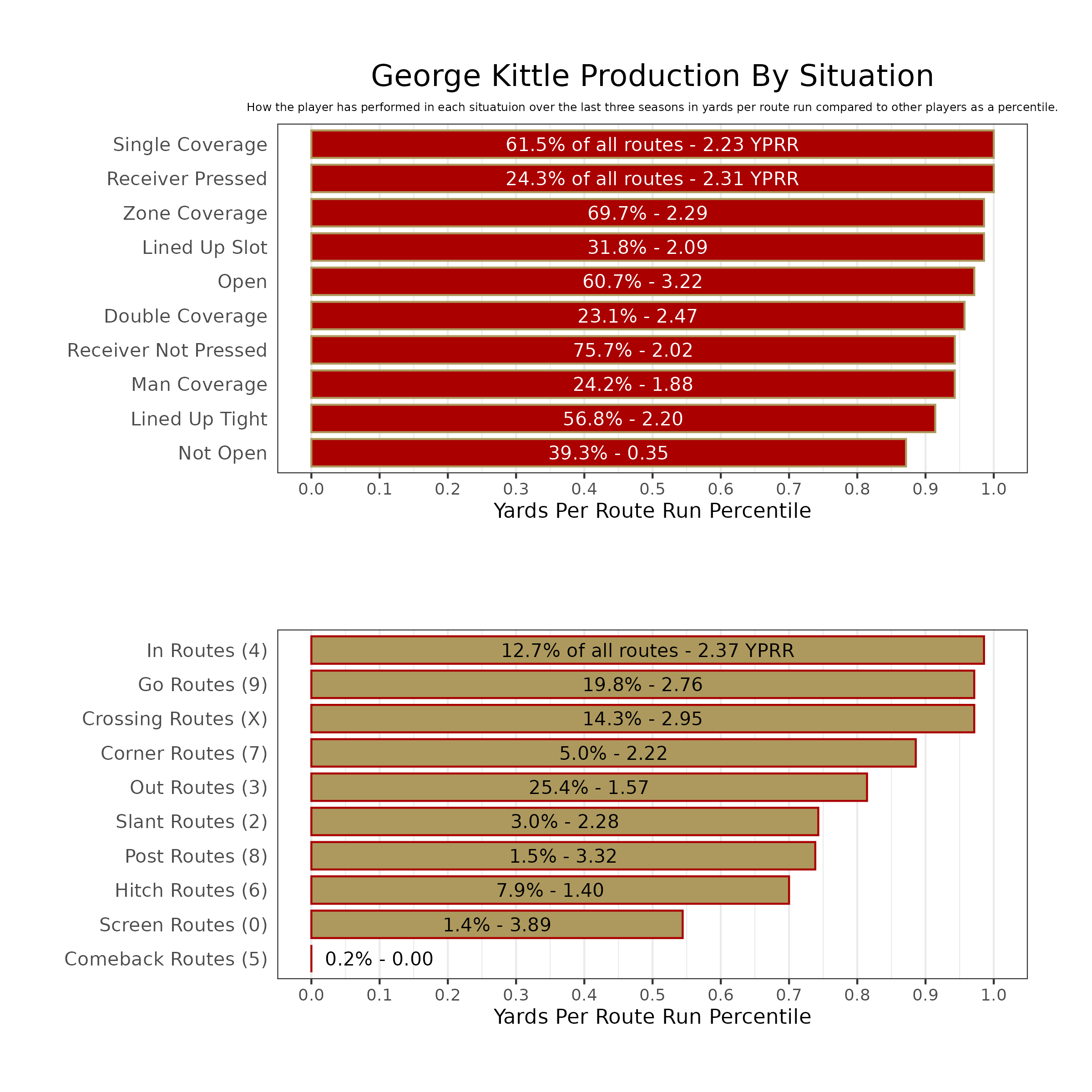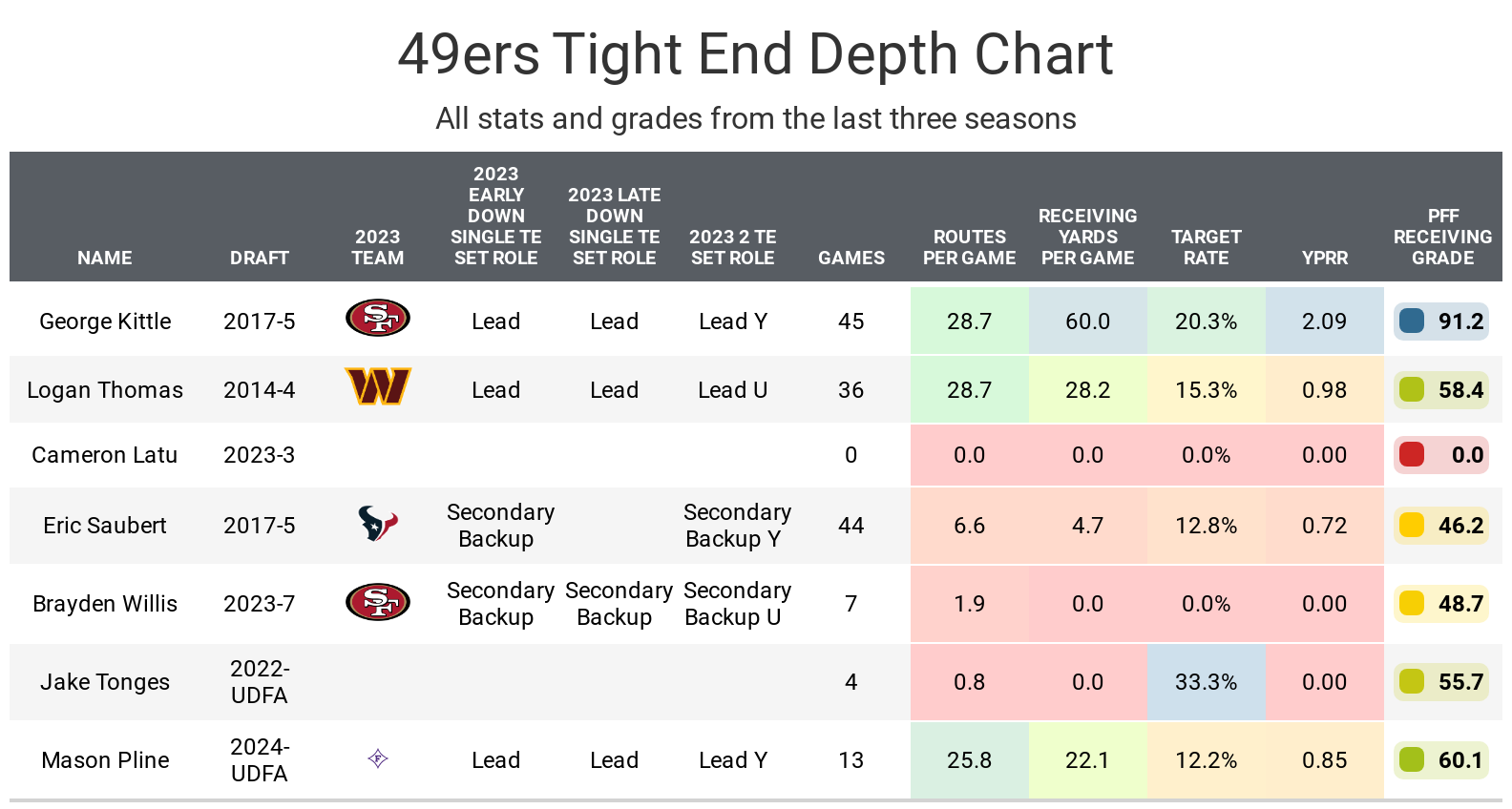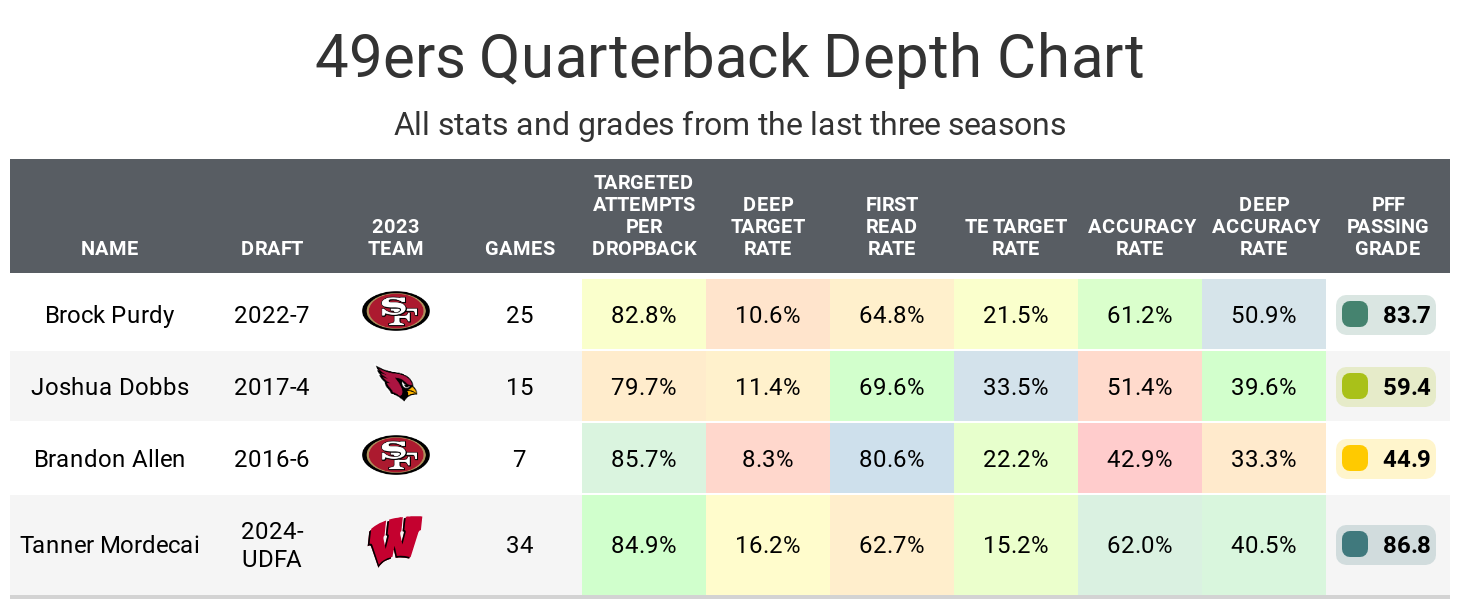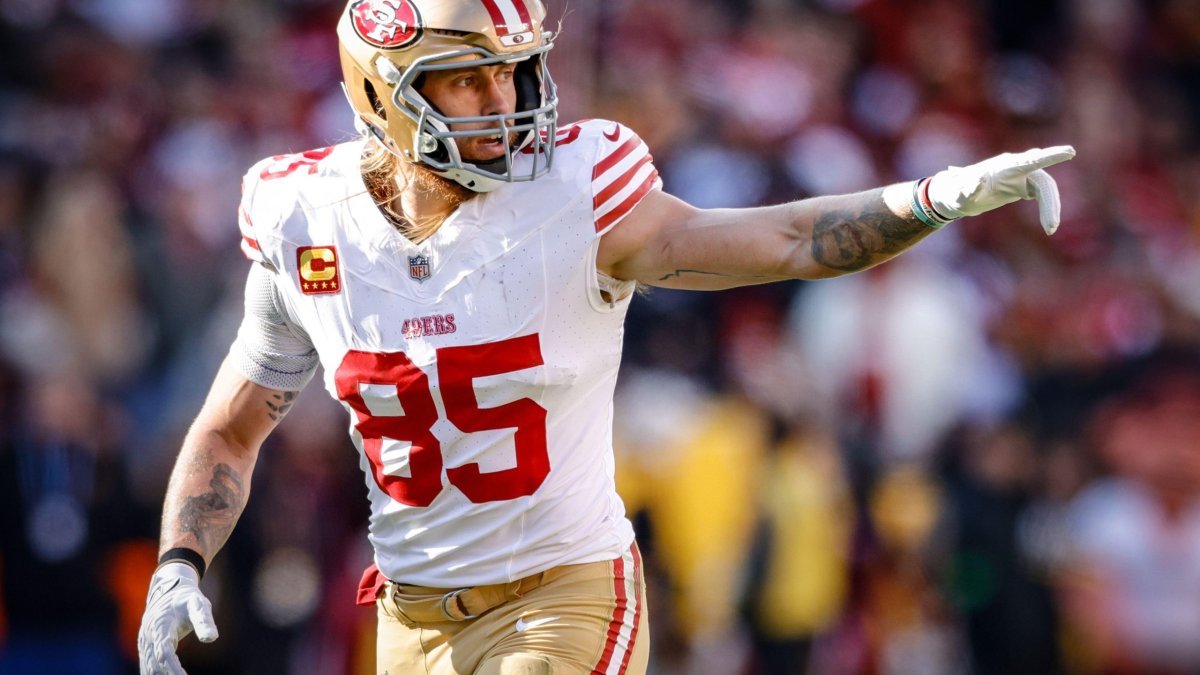• George Kittle has been incredibly consistent: Kittle's talent has overcome his relatively low number of targets to make him a consistent fantasy asset.
• Brock Purdy has kept him elite: For years, Kittle was a great deep threat without a quarterback who could take advantage of his skill set. Now the Niners tight end has that quarterback.
• Dominate fantasy football season with promo code PFF25: Unlock all of PFF's fantasy content and tools, including full access to the fantasy football mock draft simulator, for 25% off using promo code PFF25.
Estimated Reading Time: 5 minutes
The fantasy football player profile series gives the most in-depth view of a player using the best data points at PFF’s disposal. We will look at how well the player has performed, the player's competition for touches and how teammates and coaches will impact the player's performance.
Last updated: 5:00 a.m. Tuesday, July 30
Player Performance
Kittle has been the second-best tight end in the NFL for a long time.
Last season, the eight-year veteran earned the second-highest receiving grade at the position when you include the playoffs, but he ranked first in that same metric over the regular season. He has been the NFL's second-best tight end over the past two years, three years, and so on until you reach the period of Rob Gronkowski's peak.
He’s been the best tight end over the last three seasons against single coverage or press coverage and among the best in all other situations.
While he’s excellent on the field, he’s often missed at least one game due to injury. He played every game in 2018, and the only game he missed last season was a meaningless Week 18 game when multiple 49ers starters rested. He will also be 31 before the end of the season, which is considered older for a tight end.
Although Travis Kelce has shown that tight ends can perform at a high level well beyond 31, other all-time greats like Antonio Gates saw a decline in production around that age despite continuing to play for several more seasons.


Competition for Touches
Kittle's competition for targets is the main reason he isn’t a consistent top-three fantasy tight end each season. With Christian McCaffrey as the best running back in the league and Brandon Aiyuk and Deebo Samuel Sr. forming one of the best wide receiver duos, his target share is around 20% instead of the 25% his talent warrants. He would benefit if Aiyuk or Samuel were to be traded.
The 49ers made several changes at the tight end position beyond Kittle. His backups, Charlie Woerner and Ross Dwelley, who spent a combined 10 seasons with the team, left for the Atlanta Falcons in free agency this past season. Logan Thomas was added as a veteran backup, and former third-round pick Cameron Latu, who missed his rookie season, should be healthy this year.
Neither player should cut into Kittle’s playing time, as they will mostly be used in two-tight-end sets or as insurance in case Kittle gets injured.
The concern is that Kittle often plays on the line of scrimmage in two-tight-end sets because he is a strong blocker. While this benefits the 49ers, it generally hurts his fantasy value.
Logan Thomas has previously played off the line of scrimmage more often in two-tight-end sets and is not as strong of a blocker, so Kittle will likely maintain the same role despite the backup changes.


Impact of Teammates
Kittle will continue playing in Kyle Shanahan’s offense, which is beneficial as the offense performs well, but it traditionally runs more than most teams. This has consistently led to Kittle running fewer routes than other elite tight ends, requiring him to make great plays to maintain his value.
The arrival of QB Brock Purdy has significantly helped Kittle's career, as the Niners signal-caller is very accurate, especially on deeper passes. Last season, Kittle caught 16 passes that traveled at least 15 yards in the air downfield, leading to 436 receiving yards. His previous season-highs for such passes were 10 receptions for 247 yards.
Kittle’s 2023 numbers led all tight ends and are expected to remain high for the 2024 season. However, he was targeted only four times within 10 yards of the end zone last year, resulting in just one touchdown and a 16% target rate. He was targeted eight times the previous year, leading to four touchdowns.
These short touchdowns can make a significant difference in his fantasy value.


Bottom Line
Kittle has ranked among the top six fantasy tight ends in points per game in each of the last five seasons. Despite the challenges he faces, which have persisted for years, he has consistently overcome them. While he may not finish as the overall TE1, he is a safe bet to finish in the top six again if he stays healthy.

Footnotes
-
- The statistics for the tables and charts were generally chosen based on their ability to predict future fantasy performance (on either a per-game or per-occasion basis) or on their ability to describe the player relative to others at the same position.
-
- Opportunities for this purpose are defined by passing dropbacks, rushing attempts and routes run as a receiver.
-
- Numbers are either by season or based on the last three years. For rookies, only college numbers are included. Only NFL numbers are included for non-rookies, even if they played in college in the last three years.
-
- Because college competition is relatively easier than NFL competition, most rookies will likely see a decline in their numbers compared to their previous numbers.
-
- The colors for all tables in this article range from blue (good or high) to red (bad or low).
-
- All percentiles or colors compare the given player to other players with a high sample of opportunities. Generally, it’s one-third of the possible opportunities given the sample. If the player in question doesn’t have enough opportunities, they are still compared, even though a player could look good or bad on that small sample size, which might not be as predictive.
-
- Information on running back utilization classifications and importance can be found here, wide receiver here and tight end here.




 © 2024 PFF - all rights reserved.
© 2024 PFF - all rights reserved.